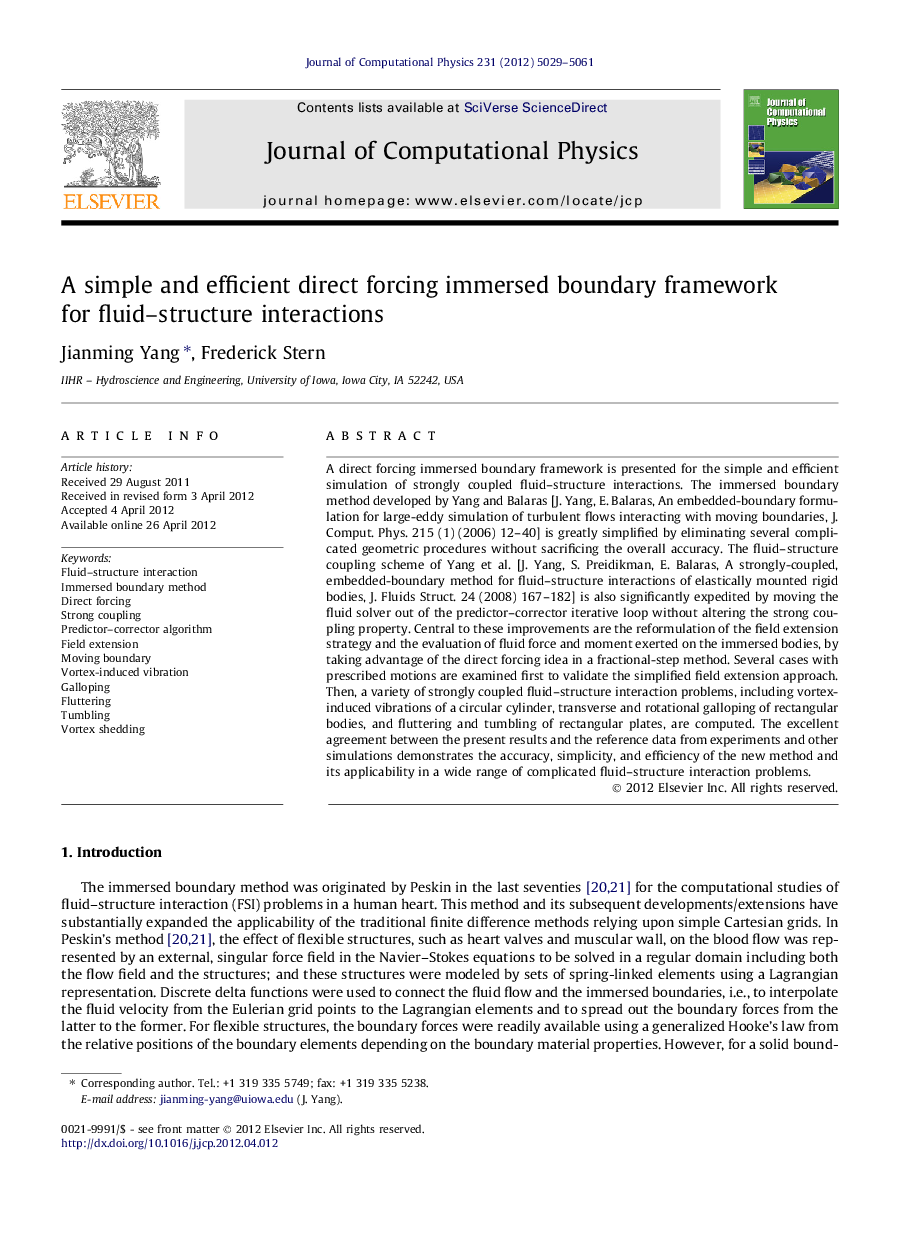| کد مقاله | کد نشریه | سال انتشار | مقاله انگلیسی | نسخه تمام متن |
|---|---|---|---|---|
| 519838 | 867685 | 2012 | 33 صفحه PDF | دانلود رایگان |

A direct forcing immersed boundary framework is presented for the simple and efficient simulation of strongly coupled fluid–structure interactions. The immersed boundary method developed by Yang and Balaras [J. Yang, E. Balaras, An embedded-boundary formulation for large-eddy simulation of turbulent flows interacting with moving boundaries, J. Comput. Phys. 215 (1) (2006) 12–40] is greatly simplified by eliminating several complicated geometric procedures without sacrificing the overall accuracy. The fluid–structure coupling scheme of Yang et al. [J. Yang, S. Preidikman, E. Balaras, A strongly-coupled, embedded-boundary method for fluid–structure interactions of elastically mounted rigid bodies, J. Fluids Struct. 24 (2008) 167–182] is also significantly expedited by moving the fluid solver out of the predictor–corrector iterative loop without altering the strong coupling property. Central to these improvements are the reformulation of the field extension strategy and the evaluation of fluid force and moment exerted on the immersed bodies, by taking advantage of the direct forcing idea in a fractional-step method. Several cases with prescribed motions are examined first to validate the simplified field extension approach. Then, a variety of strongly coupled fluid–structure interaction problems, including vortex-induced vibrations of a circular cylinder, transverse and rotational galloping of rectangular bodies, and fluttering and tumbling of rectangular plates, are computed. The excellent agreement between the present results and the reference data from experiments and other simulations demonstrates the accuracy, simplicity, and efficiency of the new method and its applicability in a wide range of complicated fluid–structure interaction problems.
Journal: Journal of Computational Physics - Volume 231, Issue 15, 1 June 2012, Pages 5029–5061